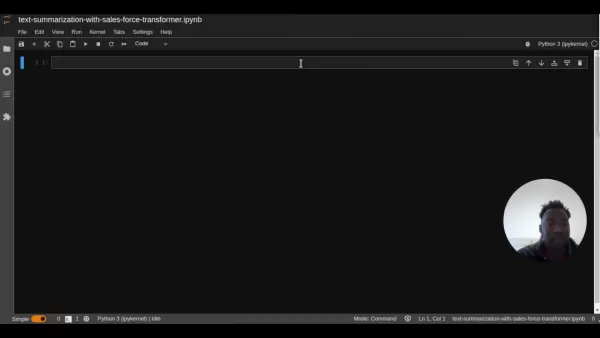Kubernetes turns 10: How it steered cloud-native computing for the last decade - and what's next

If you were to remove Linux, the cloud, containers, or Kubernetes from the tech landscape, you'd find yourself in a world that's barely recognizable. Linux serves as the bedrock for all these technologies; the cloud offers us access to their vast resources and applications; containers provide the homes for these apps; and Kubernetes keeps all the containers in harmony. Take away any one of these, and we'd be thrust back into a more primitive era of technology.
Kubernetes, in particular, has dramatically reshaped the world of cloud-native computing over the past decade. Celebrating its 10th anniversary, Kubernetes is a shining example of the power of open-source collaboration and innovation. From its inception at Google to its rise as the go-to standard for container orchestration, it has revolutionized how we deploy, manage, and scale applications.
And you don't need to just take my word for it. Pure Storage's recent The Voice of Kubernetes Experts Report 2024 found that "over the next five years, 80% of new applications will be built on cloud-native platforms." Personally, I'm surprised that figure isn't higher.
Kubernetes' Impact on Computing
Kubernetes has fundamentally changed the way we approach computing. As Liz Rice, chief open source officer at Isovalent, an eBPF-based networking, security, and observability company, explained to me, Kubernetes has transformed our approach to networking and security:
Kubernetes is fundamentally dynamic. Pods can scale up and down in response to demand, and workloads can be scheduled and rescheduled onto different machines. So, although networking between Kubernetes workloads uses IP packets, IP addresses are only meaningful in the short term because they get used and reused for different workloads at different times. This means traditional networking and security tools that identify traffic based on ports and IP addresses are no longer sufficient. We need tooling that maps ephemeral IP addresses to meaningful Kubernetes identities, such as pods, services, namespaces, and nodes.
Let's take a look back at the past decade to see where Kubernetes started, how it has shaped the cloud-native landscape, and what the future might hold.
Kubernetes' Genesis
The story of Kubernetes begins in the early 2010s at Google, where engineers were tackling the challenges of managing large-scale containerized applications. Containers were becoming increasingly important, and a management solution was desperately needed.
Inside Google, the significance of organizing containers was already well-understood. Google had been using containers long before Docker popularized them. When Google engineers Craig McLuckie, Joe Beda, and Brendan Burns pitched the idea in 2013 to Urs Hölzle, then Google's head of technical infrastructure, he responded, "So let me get this straight. You want to build an external version of the Borg task scheduler. One of our most important competitive advantages. The one we don't even talk about externally. And, on top of that, you want to open-source it?"
Yes, that's exactly what they wanted. And eventually, they convinced Hölzle it was a good move.
McLuckie explained their rationale:
We always believed that open-sourcing Kubernetes was the right way to go, bringing many benefits to the project. For one, feedback loops were essentially instantaneous -- if there was a problem or something didn't work quite right, we knew about it immediately. But most importantly, we were able to work with lots of great engineers, many of whom really understood the needs of businesses who would benefit from deploying containers. It was a virtuous cycle: the work of talented engineers led to more interest in the project, which further increased the rate of improvement and usage.
In early June 2014, at the first DockerCon, "The Container Orchestration War" was ignited. Apache Mesos, Red Hat's GearD, Docker Libswarm, Facebook's Tupperware, and Kubernetes were all announced. Brad Rydzewski, then the founder of Drone.io, noted, "What I learned at #dockercon: Everyone is building their own orchestration platform. Seriously. Everyone."
He wasn't wrong. More orchestration programs quickly followed.
Even in those early days, I believed Kubernetes would emerge as the winner. It was inspired by Google's Borg container management program, which had been in use since 2003, giving it a level of maturity the others lacked.
Kubernetes quickly gained traction. The name "Kubernetes" comes from the Greek word for "helmsman" or "pilot," symbolizing its role in steering containerized applications. The Kubernetes logo, a seven-spoke ship's wheel, pays homage to its Borg heritage and its initial name, Seven of Nine, a friendly Borg from Star Trek, which was dropped for trademark reasons.
Rapid Adoption and Community Growth
Kubernetes' open-source nature and robust feature set made it an instant hit among developers and enterprises. By 2015, Kubernetes had reached version 1.0, and Google partnered with the Linux Foundation to form the Cloud Native Computing Foundation (CNCF), with Kubernetes as its seed technology. This move was crucial in fostering a vibrant community around Kubernetes, leading to rapid innovation and widespread adoption.
While other container orchestration programs still exist, in 2017, Amazon Web Services (AWS) announced Elastic Container Service for Kubernetes (EKS), signaling Kubernetes' dominance in the cloud-native world.
Simultaneously, the CNCF nurtured the Kubernetes ecosystem. Today, hundreds of cloud-native programs rely on Kubernetes. No major cloud provider is without it. It has become the go-to container orchestration platform.
Transforming Cloud-Native Development
Kubernetes' impact on cloud-native development cannot be overstated. It introduced a new paradigm for deploying and managing applications, allowing developers to focus on writing code rather than managing infrastructure. Kubernetes abstracts away the complexities of container orchestration, offering features like automated rollouts and rollbacks, self-healing, and horizontal scaling.
Another significant advantage of Kubernetes is its portability. Applications deployed on Kubernetes can run on any cloud provider or on-premises infrastructure, making it an ideal choice for hybrid and multi-cloud environments. This flexibility has been a game-changer for enterprises, allowing them to avoid vendor lock-in and optimize their cloud strategies.
Over the years, Kubernetes has also given rise to a rich ecosystem of tools and projects that extend its capabilities. These include Helm, the Kubernetes package manager that simplifies application deployment and management, and Prometheus, the powerful monitoring and alerting tool for Kubernetes environments.
The rise of Kubernetes has also birthed new paradigms like GitOps, which leverages Git as the single source of truth for declarative infrastructure and application management.
The Future of Kubernetes
Looking ahead, Kubernetes shows no signs of slowing down. The platform continues to evolve, with new features and enhancements being added regularly. The Kubernetes community is exploring ways to simplify the user experience, improve security, and enhance scalability.
Ville Aikas, Chainguard co-founder and one of Kubernetes' creators, observed:
We have this massive CNCF landscape that's bloomed, which is a wonderful thing in terms of all the diversity of tooling and infrastructure options it gives to platform teams. But I think it also creates a bunch of choices that have to be made in order to operate Kubernetes – and that landscape has gotten huge. I always felt that one of the core reasons Kubernetes became so popular was its Application Programming Interface (API) is so simple and that the cognitive load to use it is relatively low. As Kubernetes continues to mature, it needs to somehow retain the simplicity of its mental model and usability of its API.
Balancing Kubernetes and cloud-native programming paradigms is becoming increasingly complex.
Shahar Azulay, CEO and co-founder of Groundcover, an eBPF performance monitoring company, noted:
Kubernetes has demonstrated its ability to manage diverse tasks effectively, but its complexity requires considerable setup and ongoing maintenance. Similar to how Linux developed into a reliable operating system, I expect Kubernetes to transform into a more user-friendly abstraction layer. As Kubernetes adoption continues to grow a decade in, the need for efficiency and cost optimization becomes increasingly critical.
Looking to the future, Isovalent's Rice added:
We're already seeing Kubernetes being used in more hybrid environments alongside legacy workloads and in edge devices. The Cilium vision is that an application developer should not need to know or care where the services they want to interact with are running: connectivity and security should all be handled in the platform layer.
Another exciting development on the horizon is the integration of Kubernetes with serverless computing. Projects like Kubeless and Fission are bringing serverless capabilities to Kubernetes, allowing developers to build and deploy functions-as-a-service (FaaS) on top of their existing Kubernetes clusters. This fusion of serverless and Kubernetes promises to unlock new possibilities for cloud-native applications.
Edge computing and Kubernetes are also growing hand in hand. As more devices and applications move to the edge, Kubernetes is being adapted to support edge deployments. The Kubernetes community is working on projects like KubeEdge, MicroK8s, and Red Hat Device Edge to enable lightweight, efficient Kubernetes clusters that can run on edge devices.
The future looks bright for Kubernetes. With ongoing innovation and a thriving ecosystem, Kubernetes is poised to continue shaping the cloud-native landscape for years to come. Here's to another decade of Kubernetes, filled with innovation, collaboration, and excellence in container orchestration.
Related article
 Seeking Faith and Purpose in an Age of Skepticism
In our modern age of scientific inquiry and critical thinking, maintaining spiritual faith often feels like walking against the tide. Many struggle to reconcile timeless beliefs with contemporary skepticism, leaving them longing for deeper meaning. T
Seeking Faith and Purpose in an Age of Skepticism
In our modern age of scientific inquiry and critical thinking, maintaining spiritual faith often feels like walking against the tide. Many struggle to reconcile timeless beliefs with contemporary skepticism, leaving them longing for deeper meaning. T
 How ChatGPT Works: Capabilities, Applications, and Future Implications
The rapid evolution of artificial intelligence is transforming digital interactions and communication. Leading this transformation is ChatGPT, an advanced conversational AI that sets new standards for natural language processing. This in-depth examin
How ChatGPT Works: Capabilities, Applications, and Future Implications
The rapid evolution of artificial intelligence is transforming digital interactions and communication. Leading this transformation is ChatGPT, an advanced conversational AI that sets new standards for natural language processing. This in-depth examin
 Salesforce’s Transformer Model Guide: AI Text Summarization Explained
In an era where information overload is the norm, AI-powered text summarization has become an indispensable tool for extracting key insights from lengthy documents. This comprehensive guide examines Salesforce's groundbreaking AI summarization techno
Comments (2)
0/200
Salesforce’s Transformer Model Guide: AI Text Summarization Explained
In an era where information overload is the norm, AI-powered text summarization has become an indispensable tool for extracting key insights from lengthy documents. This comprehensive guide examines Salesforce's groundbreaking AI summarization techno
Comments (2)
0/200
![BruceGonzalez]() BruceGonzalez
BruceGonzalez
 August 25, 2025 at 5:01:22 PM EDT
August 25, 2025 at 5:01:22 PM EDT
Kubernetes hitting 10 is wild! It's like the backbone of cloud tech now, but what's next? Hoping for smoother scaling and less complexity 🤞


 0
0
![PaulHill]() PaulHill
PaulHill
 August 7, 2025 at 1:01:05 AM EDT
August 7, 2025 at 1:01:05 AM EDT
Kubernetes at 10? That's a decade of taming the cloud beast! It's wild to think how it’s shaped everything from startups to giants. What's next, though? Smarter orchestration or AI-driven clusters? 🤔 Exciting times!


 0
0

If you were to remove Linux, the cloud, containers, or Kubernetes from the tech landscape, you'd find yourself in a world that's barely recognizable. Linux serves as the bedrock for all these technologies; the cloud offers us access to their vast resources and applications; containers provide the homes for these apps; and Kubernetes keeps all the containers in harmony. Take away any one of these, and we'd be thrust back into a more primitive era of technology.
Kubernetes, in particular, has dramatically reshaped the world of cloud-native computing over the past decade. Celebrating its 10th anniversary, Kubernetes is a shining example of the power of open-source collaboration and innovation. From its inception at Google to its rise as the go-to standard for container orchestration, it has revolutionized how we deploy, manage, and scale applications.
And you don't need to just take my word for it. Pure Storage's recent The Voice of Kubernetes Experts Report 2024 found that "over the next five years, 80% of new applications will be built on cloud-native platforms." Personally, I'm surprised that figure isn't higher.
Kubernetes' Impact on Computing
Kubernetes has fundamentally changed the way we approach computing. As Liz Rice, chief open source officer at Isovalent, an eBPF-based networking, security, and observability company, explained to me, Kubernetes has transformed our approach to networking and security:
Kubernetes is fundamentally dynamic. Pods can scale up and down in response to demand, and workloads can be scheduled and rescheduled onto different machines. So, although networking between Kubernetes workloads uses IP packets, IP addresses are only meaningful in the short term because they get used and reused for different workloads at different times. This means traditional networking and security tools that identify traffic based on ports and IP addresses are no longer sufficient. We need tooling that maps ephemeral IP addresses to meaningful Kubernetes identities, such as pods, services, namespaces, and nodes.
Let's take a look back at the past decade to see where Kubernetes started, how it has shaped the cloud-native landscape, and what the future might hold.
Kubernetes' Genesis
The story of Kubernetes begins in the early 2010s at Google, where engineers were tackling the challenges of managing large-scale containerized applications. Containers were becoming increasingly important, and a management solution was desperately needed.
Inside Google, the significance of organizing containers was already well-understood. Google had been using containers long before Docker popularized them. When Google engineers Craig McLuckie, Joe Beda, and Brendan Burns pitched the idea in 2013 to Urs Hölzle, then Google's head of technical infrastructure, he responded, "So let me get this straight. You want to build an external version of the Borg task scheduler. One of our most important competitive advantages. The one we don't even talk about externally. And, on top of that, you want to open-source it?"
Yes, that's exactly what they wanted. And eventually, they convinced Hölzle it was a good move.
McLuckie explained their rationale:
We always believed that open-sourcing Kubernetes was the right way to go, bringing many benefits to the project. For one, feedback loops were essentially instantaneous -- if there was a problem or something didn't work quite right, we knew about it immediately. But most importantly, we were able to work with lots of great engineers, many of whom really understood the needs of businesses who would benefit from deploying containers. It was a virtuous cycle: the work of talented engineers led to more interest in the project, which further increased the rate of improvement and usage.
In early June 2014, at the first DockerCon, "The Container Orchestration War" was ignited. Apache Mesos, Red Hat's GearD, Docker Libswarm, Facebook's Tupperware, and Kubernetes were all announced. Brad Rydzewski, then the founder of Drone.io, noted, "What I learned at #dockercon: Everyone is building their own orchestration platform. Seriously. Everyone."
He wasn't wrong. More orchestration programs quickly followed.
Even in those early days, I believed Kubernetes would emerge as the winner. It was inspired by Google's Borg container management program, which had been in use since 2003, giving it a level of maturity the others lacked.
Kubernetes quickly gained traction. The name "Kubernetes" comes from the Greek word for "helmsman" or "pilot," symbolizing its role in steering containerized applications. The Kubernetes logo, a seven-spoke ship's wheel, pays homage to its Borg heritage and its initial name, Seven of Nine, a friendly Borg from Star Trek, which was dropped for trademark reasons.
Rapid Adoption and Community Growth
Kubernetes' open-source nature and robust feature set made it an instant hit among developers and enterprises. By 2015, Kubernetes had reached version 1.0, and Google partnered with the Linux Foundation to form the Cloud Native Computing Foundation (CNCF), with Kubernetes as its seed technology. This move was crucial in fostering a vibrant community around Kubernetes, leading to rapid innovation and widespread adoption.
While other container orchestration programs still exist, in 2017, Amazon Web Services (AWS) announced Elastic Container Service for Kubernetes (EKS), signaling Kubernetes' dominance in the cloud-native world.
Simultaneously, the CNCF nurtured the Kubernetes ecosystem. Today, hundreds of cloud-native programs rely on Kubernetes. No major cloud provider is without it. It has become the go-to container orchestration platform.
Transforming Cloud-Native Development
Kubernetes' impact on cloud-native development cannot be overstated. It introduced a new paradigm for deploying and managing applications, allowing developers to focus on writing code rather than managing infrastructure. Kubernetes abstracts away the complexities of container orchestration, offering features like automated rollouts and rollbacks, self-healing, and horizontal scaling.
Another significant advantage of Kubernetes is its portability. Applications deployed on Kubernetes can run on any cloud provider or on-premises infrastructure, making it an ideal choice for hybrid and multi-cloud environments. This flexibility has been a game-changer for enterprises, allowing them to avoid vendor lock-in and optimize their cloud strategies.
Over the years, Kubernetes has also given rise to a rich ecosystem of tools and projects that extend its capabilities. These include Helm, the Kubernetes package manager that simplifies application deployment and management, and Prometheus, the powerful monitoring and alerting tool for Kubernetes environments.
The rise of Kubernetes has also birthed new paradigms like GitOps, which leverages Git as the single source of truth for declarative infrastructure and application management.
The Future of Kubernetes
Looking ahead, Kubernetes shows no signs of slowing down. The platform continues to evolve, with new features and enhancements being added regularly. The Kubernetes community is exploring ways to simplify the user experience, improve security, and enhance scalability.
Ville Aikas, Chainguard co-founder and one of Kubernetes' creators, observed:
We have this massive CNCF landscape that's bloomed, which is a wonderful thing in terms of all the diversity of tooling and infrastructure options it gives to platform teams. But I think it also creates a bunch of choices that have to be made in order to operate Kubernetes – and that landscape has gotten huge. I always felt that one of the core reasons Kubernetes became so popular was its Application Programming Interface (API) is so simple and that the cognitive load to use it is relatively low. As Kubernetes continues to mature, it needs to somehow retain the simplicity of its mental model and usability of its API.
Balancing Kubernetes and cloud-native programming paradigms is becoming increasingly complex.
Shahar Azulay, CEO and co-founder of Groundcover, an eBPF performance monitoring company, noted:
Kubernetes has demonstrated its ability to manage diverse tasks effectively, but its complexity requires considerable setup and ongoing maintenance. Similar to how Linux developed into a reliable operating system, I expect Kubernetes to transform into a more user-friendly abstraction layer. As Kubernetes adoption continues to grow a decade in, the need for efficiency and cost optimization becomes increasingly critical.
Looking to the future, Isovalent's Rice added:
We're already seeing Kubernetes being used in more hybrid environments alongside legacy workloads and in edge devices. The Cilium vision is that an application developer should not need to know or care where the services they want to interact with are running: connectivity and security should all be handled in the platform layer.
Another exciting development on the horizon is the integration of Kubernetes with serverless computing. Projects like Kubeless and Fission are bringing serverless capabilities to Kubernetes, allowing developers to build and deploy functions-as-a-service (FaaS) on top of their existing Kubernetes clusters. This fusion of serverless and Kubernetes promises to unlock new possibilities for cloud-native applications.
Edge computing and Kubernetes are also growing hand in hand. As more devices and applications move to the edge, Kubernetes is being adapted to support edge deployments. The Kubernetes community is working on projects like KubeEdge, MicroK8s, and Red Hat Device Edge to enable lightweight, efficient Kubernetes clusters that can run on edge devices.
The future looks bright for Kubernetes. With ongoing innovation and a thriving ecosystem, Kubernetes is poised to continue shaping the cloud-native landscape for years to come. Here's to another decade of Kubernetes, filled with innovation, collaboration, and excellence in container orchestration.
 Seeking Faith and Purpose in an Age of Skepticism
In our modern age of scientific inquiry and critical thinking, maintaining spiritual faith often feels like walking against the tide. Many struggle to reconcile timeless beliefs with contemporary skepticism, leaving them longing for deeper meaning. T
Seeking Faith and Purpose in an Age of Skepticism
In our modern age of scientific inquiry and critical thinking, maintaining spiritual faith often feels like walking against the tide. Many struggle to reconcile timeless beliefs with contemporary skepticism, leaving them longing for deeper meaning. T
 How ChatGPT Works: Capabilities, Applications, and Future Implications
The rapid evolution of artificial intelligence is transforming digital interactions and communication. Leading this transformation is ChatGPT, an advanced conversational AI that sets new standards for natural language processing. This in-depth examin
How ChatGPT Works: Capabilities, Applications, and Future Implications
The rapid evolution of artificial intelligence is transforming digital interactions and communication. Leading this transformation is ChatGPT, an advanced conversational AI that sets new standards for natural language processing. This in-depth examin
 Salesforce’s Transformer Model Guide: AI Text Summarization Explained
In an era where information overload is the norm, AI-powered text summarization has become an indispensable tool for extracting key insights from lengthy documents. This comprehensive guide examines Salesforce's groundbreaking AI summarization techno
Salesforce’s Transformer Model Guide: AI Text Summarization Explained
In an era where information overload is the norm, AI-powered text summarization has become an indispensable tool for extracting key insights from lengthy documents. This comprehensive guide examines Salesforce's groundbreaking AI summarization techno
 August 25, 2025 at 5:01:22 PM EDT
August 25, 2025 at 5:01:22 PM EDT
Kubernetes hitting 10 is wild! It's like the backbone of cloud tech now, but what's next? Hoping for smoother scaling and less complexity 🤞


 0
0
 August 7, 2025 at 1:01:05 AM EDT
August 7, 2025 at 1:01:05 AM EDT
Kubernetes at 10? That's a decade of taming the cloud beast! It's wild to think how it’s shaped everything from startups to giants. What's next, though? Smarter orchestration or AI-driven clusters? 🤔 Exciting times!


 0
0





























